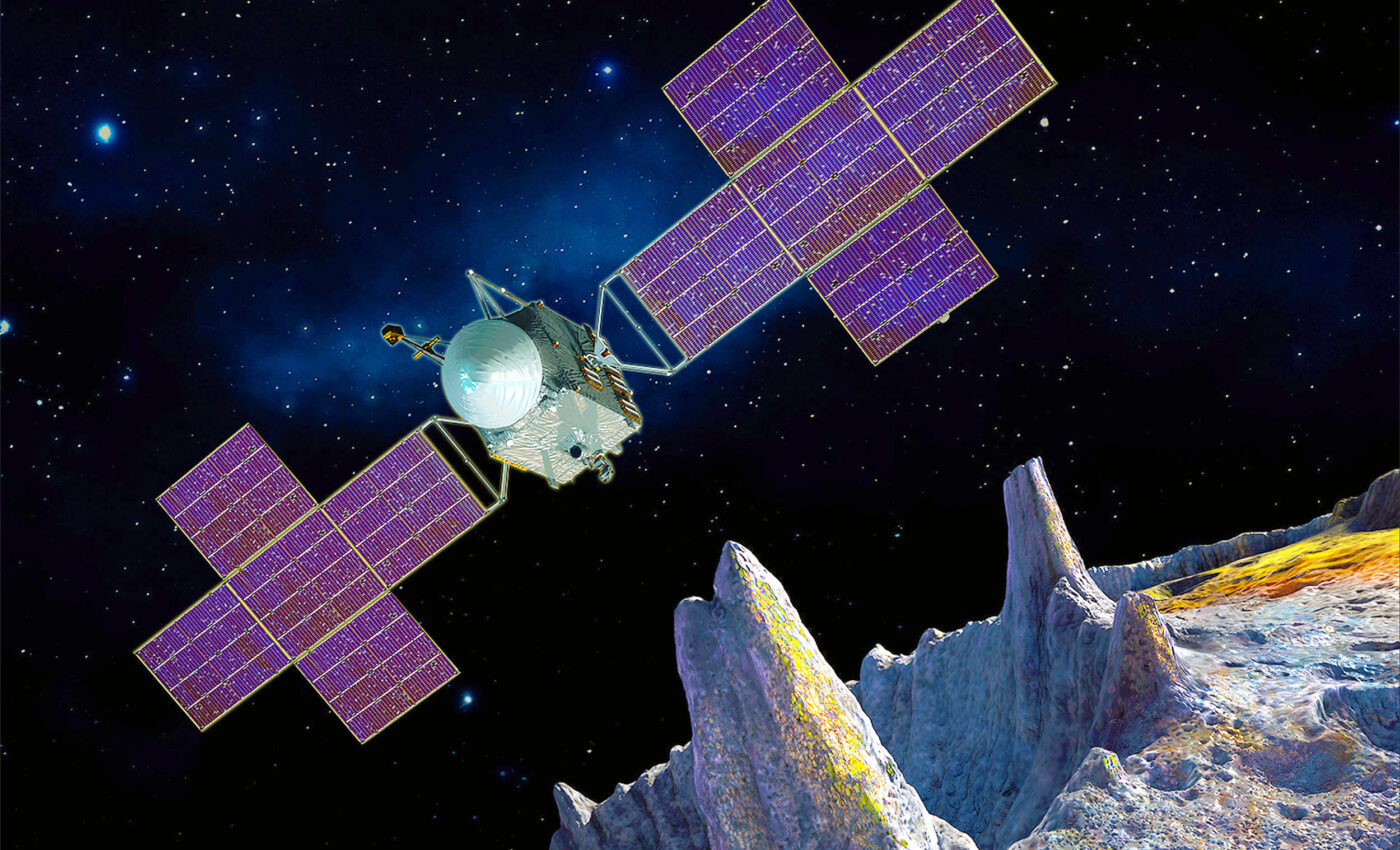
Successful launch for NASA’s Psyche mission to study an asteroid worth $10,000-quadrillion
NASA’s Psyche mission has set off on its journey to explore an unparalleled metal-rich asteroid named Psyche. This initiative can potentially unravel the mysteries behind the creation of rocky planets.
Psyche mission launch details
The spacecraft was successfully launched at 10:19 a.m. EDT Friday from NASA’s Kennedy Space Center in Florida. This commendable feat was achieved with the assistance of a SpaceX Falcon Heavy rocket that lifted off from Launch Pad 39A.
In less than five minutes post-launch, after the rocket’s second stage reached an optimal altitude, the fairings detached from the rocket, marking their return journey to Earth. Approximately an hour later, the Psyche spacecraft parted ways with the rocket. This was followed by an eager wait by the ground controllers to establish contact with the spacecraft.
Fortunately, Psyche made two-way communication at 11:50 a.m. EDT with NASA’s Deep Space Network complex located in Canberra, Australia. Initial reports suggested that the spacecraft was in a healthy condition.
Deep space optical communications technology
One of the standout features of the Psyche spacecraft is NASA’s Deep Space Optical Communications technology. This technology, which is still in its demonstration phase, represents a significant upgrade from traditional radio frequency communications, offering greater bandwidth for data transmission.
This could be a game-changer for future exploration missions, allowing for enhanced communication capabilities.
Comments from NASA
Bill Nelson, NASA Administrator, expressed his elation at the launch, emphasizing its significance in understanding planet formation and trialing technology that can be utilized in forthcoming NASA missions. He said, “As Asteroid Autumn continues, so does NASA’s commitment to exploring the unknown and inspiring the world through discovery.”
Nicola Fox, associate administrator for the Science Mission Directorate at NASA Headquarters, mentioned her anticipation regarding the wealth of knowledge Psyche might uncover. The insights expected from studying asteroid Psyche could potentially help in understanding the enigmatic core of our very own Earth.
The Psyche mission’s grand objective
Slated for August 2029, the spacecraft is programmed to commence its orbit around the asteroid Psyche, a 173-mile-wide metal-class asteroid. Owing to its high concentration of iron-nickel metal, scientists theorize that Psyche might represent the remnant core of a planetesimal, a foundational component of early planets. The mission’s primary objective is a comprehensive 26-month scientific investigation.
Lindy Elkins-Tanton, Psyche’s principal investigator at Arizona State University, equated the launch not as a finish line, but as the commencement of another challenging phase, anticipating the numerous revelations that the spacecraft’s encounter with the asteroid might bring.
Futuristic propulsion system
For its monumental six-year, 2.2-billion-mile journey to the primary asteroid belt sandwiched between Mars and Jupiter, the spacecraft is equipped with a state-of-the-art solar electric propulsion system. This ingenious system functions by discharging ions of the neutral gas xenon, resulting in a thrust that gently drives the spacecraft. The spacecraft is also set to leverage Mars’ gravity to expedite its journey.
Laurie Leshin, the director of NASA’s Jet Propulsion Laboratory, praised the Psyche team for their perseverance and expressed eagerness for the upcoming exploratory phase.
The road ahead for the Psyche mission
The mission’s initial 100 days, known as the commissioning phase or initial checkout period, will primarily focus on ensuring the health and readiness of all flight systems. Of paramount importance during this phase is the validation of the electric thrusters’ capability to sustain firing over elongated periods.
Additionally, the mission’s science instruments, which include the magnetometer, gamma-ray and neutron spectrometer, and multispectral imager, will undergo an active checkout starting approximately six weeks from now.
The much-awaited activation of the optical communications technology demonstration is projected in about three weeks, marking NASA’s first venture beyond the Moon using high-data-rate optical or laser communications.
Dr. Prasun Desai of NASA Headquarters stated the potential of this technology to redefine communication protocols for space exploration in the future.
In summary, the Psyche mission symbolizes NASA’s unwavering commitment to advancing space exploration and understanding our universe. The forthcoming years are laden with promises of groundbreaking discoveries and technological advancements that could reshape our understanding of space and our position in it.
—
Like what you read? Subscribe to our newsletter for engaging articles, exclusive content, and the latest updates.
—
Check us out on EarthSnap, a free app brought to you by Eric Ralls and Earth.com.













